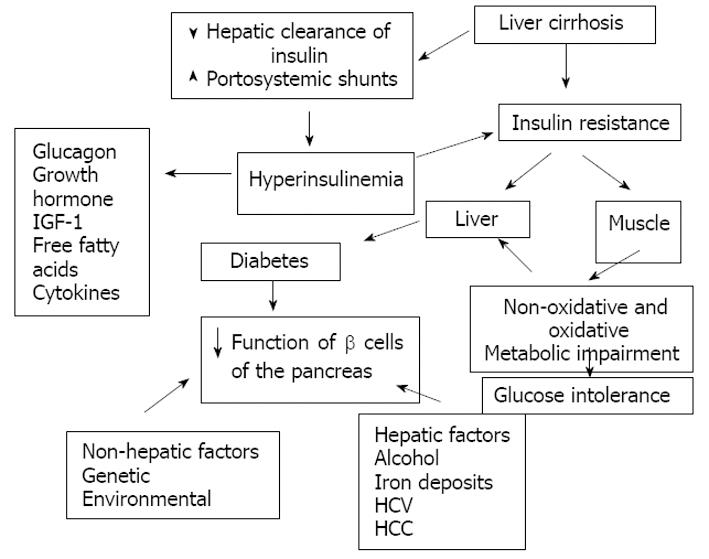Copyright
©2009 The WJG Press and Baishideng.
World J Gastroenterol. Jan 21, 2009; 15(3): 280-288
Published online Jan 21, 2009. doi: 10.3748/wjg.15.280
Published online Jan 21, 2009. doi: 10.3748/wjg.15.280
Figure 4 Pathophysiology of hepatogenous diabetes.
One of the main abnormalities is insulin resistance in muscular cells and the hepatic tissue. Insulin resistance in muscle impairs non-oxidative and oxidative glucose metabolism. The reduction of insulin clearance by the damaged liver and the presence of portosystemic shunts in one hand and the desensitization of the beta cells of the pancreas produced by diverse factors on the other hand may produce hyperinsulinemia. With progression of the diabetes there is a reduction in sensitivity of β-cells for production of insulin.
- Citation: Garcia-Compean D, Jaquez-Quintana JO, Gonzalez-Gonzalez JA, Maldonado-Garza H. Liver cirrhosis and diabetes: Risk factors, pathophysiology, clinical implications and management. World J Gastroenterol 2009; 15(3): 280-288
- URL: https://www.wjgnet.com/1007-9327/full/v15/i3/280.htm
- DOI: https://dx.doi.org/10.3748/wjg.15.280









